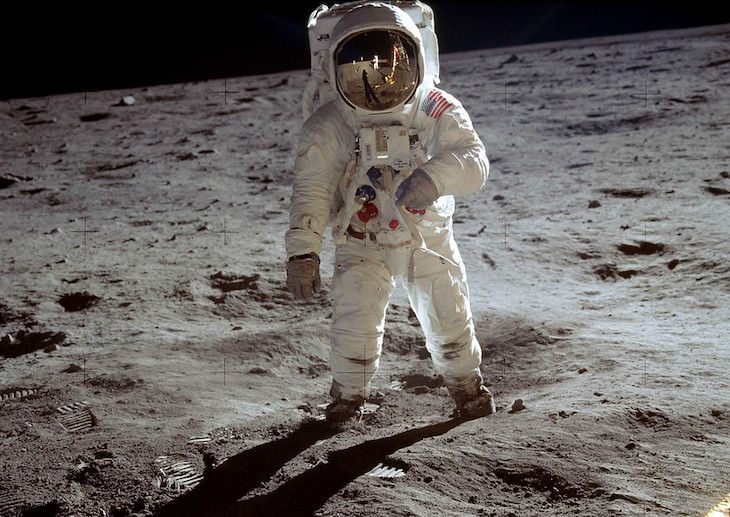

What makes a conspiracy theory a conspiracy theory? What makes it different from any old rumor? There is no universal guideline, but there is one key difference to keep in mind. A conspiracy - and by extension, a conspiracy theory - must involve a group of people conducting secret plans and deeds that disadvantage or infringe the rights of others. For instance, a common falsehood is that fluoride is harmful to the body. A conspiracy theory would be that fluoride is harmful to the body and is a form of mind control perpetrated by the government.
The central difference between a conspiracy theory and an actual conspiracy is proof. Conspiracy theories lack objective and verifiable proof. Thus, they stay just that - theories.
Related: 10 Most Well Known American Conspiracy Theories

Image Source: Manhhai / Flickr
One famous example of a conspiracy theory is the Apollo 11 “hoax.” Conspiracy theories claiming that the 1969 moon landing was faked have remained persistent in the 50 years since Neil Armstrong and Buzz Aldrin walked on the moon’s surface. Keeping a secret of that magnitude would have been very difficult.
In fact, physicist and cancer biologist David Robert Grimes published a mathematical equation that estimates how many people it would take to keep a conspiracy secret, and how long it would take before that conspiracy was exposed to the public. The equation takes into account the number of conspirators involved, how much time has passed, and the probability of someone spilling the beans.
According to Grimes’s formula, if the moon landing was a hoax, it would have required 411,000 people to keep it a secret. What’s more, by his math, someone would have come forward with the truth in less than four years.
Related: NASA Uses Flickr to Debunk Apollo Conspiracy Theories

Conspiracy theories are not a new phenomenon. They may seem like a product of modern times, but conspiracy theories go way back in history. For example, in the late 1500s, there was a persistent theory that Queen Elizabeth I was actually a man.
To prove that these kinds of theories are no more prevalent today than they were 100 years ago, researchers read through more than 100,000 letters sent to the editors of The New York Times and The Chicago Tribune between 1890 and 2010. The study revealed that the volume of conspiracy theorizing throughout the century remained stable rather than increasing. The data that is available from the last 10 years suggests that this holds today too.
The internet made the discovery and research of different conspiracy theories more accessible. This is probably the reason why conspiracy theories seem to be everywhere now, when in fact, people have been creating and spreading them at a pretty consistent rate in the last 100 or so years.
According to John Cook, an expert on misinformation with George Mason University in Fairfax, Virginia, a disastrous event makes for a “very fertile breeding ground for conspiracy theories.” When people feel threatened, overwhelmed, or can’t fully comprehend a significant event, the world can seem scary and out of control.
Conspiracy theories can help ‘put things into order’ and make sense of difficult situations. “Randomness is very discomforting to people,” Cook explained. This is why, for example, it was easier for some people to believe that “shadowy groups and agencies” were behind the JFK assassination.

A 2010 study found that it’s almost impossible to change someone’s mind once they begin to believe in a conspiracy theory. As part of the research, participants were given corrections to misleading claims they were given beforehand. Reading the corrections was not only ineffective, but it actually increased their conviction in the misleading claims, especially if they had believed it strongly.
Another study, however, came to the opposite conclusion. Published in 2018, the research found that facts do help. More than 10,000 participants reacted to 52 different claims and corrections. The researchers found that fact-checking and pointing out logical inconsistencies does have the potential to reduce the belief in conspiracy theories. All in all, it never hurts to try.
There are cases of conspiracy theories that proved to be true, too. Some stories were too hard to believe until declassified documents or investigations proved that they actually happened. For example, the FBI only recognized the mafia’s existence in 1957. The idea that organized crime existed sounded far-fetched, and most federal agencies focused almost entirely on issues related to the Cold War.
The fact that asbestos is harmful to one’s health was once treated as a myth too until the scandalous information was exposed in 1962. To learn about more fascinating conspiracy theories that turned out to be true, read our previous article - 7 Conspiracy Theories that Are Actually True.
Found this article interesting? Share it with others!